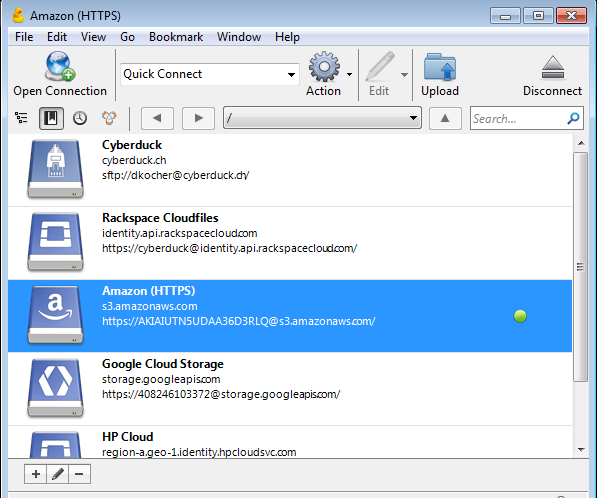Aug 05, 2009 Mac OS X has built in FTP software, but its a Terminal thing - it's simple UNIX stuff, which is what I prefer, but some folks like a GUI = Cyber Duck (free) and then there is Transmit (not free), and there are several others.
In this tutorial you learn the basics of uploading your website using Cyberduck, the excellent and free FTP software for the Mac. It was written for version 2.8.5, but the tutorial should also be useful if you're using a later version.
Ftp Duck Mac Os 10.8
Jan 26, 2021 Overview Cyberduck is a robust FTP/FTP-TLS/SFTP browser for the Mac whose lack of visual clutter and cleverly intuitive features make it easy to use. Support for external editors and system technologies such as Spotlight, Bonjour, Keychain, and AppleScript are built-in. Note: While the software is classified as free, it is actually donationware. Apr 14, 2008 To configure Cyberduck to work through an FTP proxy server in Mac OS X 10.4 (Tiger), open the System Preferences application, then click Network, then the Proxies tab, check the FTP Proxy option in the list, and enter your FTP proxy details.
Connecting to your Web server
The first thing you need to do is connect to your Web server. To do this, first open a new Cyberduck browser window, if one isn't already open, by choosing File > New Browser. Now choose File > Open Connection, or click the Open Connection button at the top left of the browser window:
This displays a dialog where you can enter your web server's name (Server), your login name (Username), and your login password (Password). Enter your details, then click Connect to connect to your server:
You may be behind a proxy server or firewall, especially if you're trying this from work. If so, you will need to get your firewall details from your IT support people. To configure Cyberduck to work through an FTP proxy server in Mac OS X 10.4 (Tiger), open the System Preferences application, then click Network, then the Proxies tab, check the FTP Proxy
Your home directory
Os x mavericks server 10 9 dp6 (13s341g). Once logged in, you will be taken to your home directory on your Web server. This directory contains (amongst other things) your website directory, which is where you need to upload all your files:
Weather dock 4 2 0 – desktop forecast 10. Double-click your website directory – mysite.com in the above screenshot – to browse its contents.
Your document root
The top level folder of your website is often called the document root. This is where you will place your first website files. The document root is often named htdocs or public_html, and is usually inside your website directory.
Double-click your document root folder – htdocs in the above screenshot – to browse its contents.
Uploading a Web page
Once you've found your document root, you're now ready to upload your website. Here, we're going to upload our first page, index.html, which should be the name of the main page of your website.
The easiest way to do this in Cyberduck is to open the website folder on your hard drive using the Finder, then drag the file from the Finder to the Cyberduck window:
You'll see a Transfers dialog appear as Cyberduck uploads the file to your Web server. When it is finished you should see a copy of your file in the Cyberduck window. Name mangler 3 64 bit. Congratulations – you've just uploaded your Web page!
If you now open up a Web browser and go to your website's URL, you should see your Web page on the Internet. Well done! 🙂
Cyberduck Ftp For Mac - En.downloadlists.info
Other stuff
Downloading
Ftp Duck Mac Os 10.13
If you need to download a Web page from your site again (for example, you lost the original on your PC), simply drag and drop your page the other way, from Cyberduck to a Finder window (or to your Desktop).
Disconnecting
After you've finished uploading stuff, click the Disconnect button at the top right of the Cyberduck browser window to disconnect from your Web server. Or simply close down Cyberduck.
By default, if you close Cyberduck with a connection still open, it reconnects to that server when you next start up Cyberduck. A nice touch!Deleting files
To delete a file that you have uploaded to your server, click on the file in the Cyberduck window to select it, and press the Delete key on your keyboard.
Doing other stuff to files
Right-click on a file on your Web server and you will see all sorts of things you can do to it, such as renaming it and editing it. To learn about these features, visit the Cyberduck help pages.

